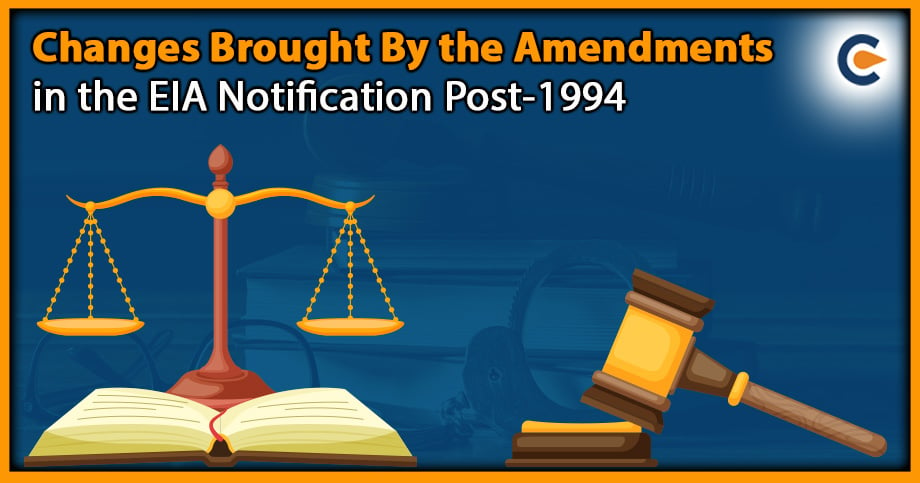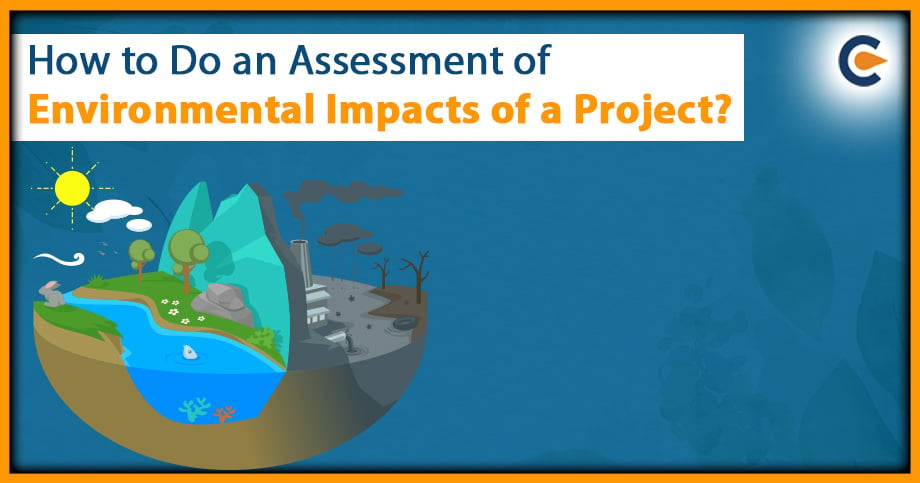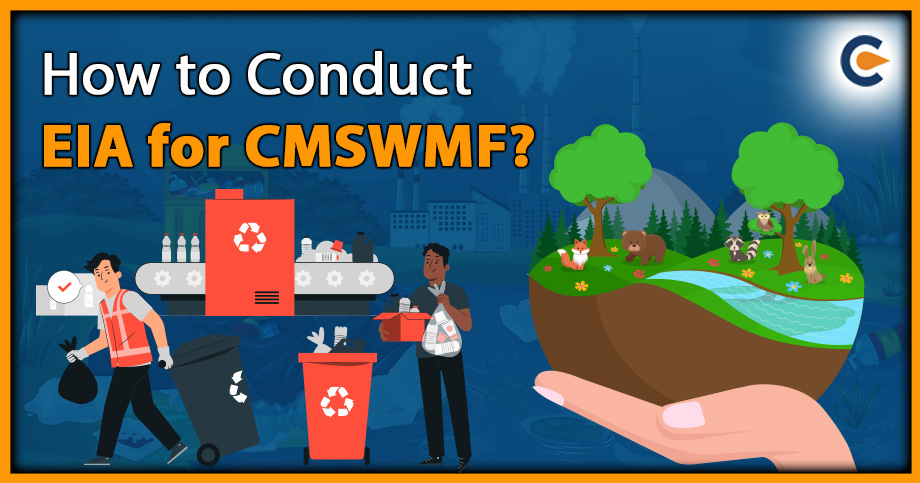Till 1994, the process of environmental clearance was an administrative decision and needed more legislative support. Then in 1994, the first EIA Notification was introduced and made mandatory for new projects and the expansion or modernisation of any industrial activity listed in Schedule 1 of the notification. This notification version underwent 12 amendments until 2006, when a new notification was released. The objective of Amendments in the EIA Notification 2006 was to address the remaining limitations in the 1994 Notification. The 2006 version went through another series of amendments. In 2020, the Ministry of Environment, Forest and Climate Change released a draft Notification to replace the 2006 notification. However, due to criticism faced from the public, the notification remains to be implemented. Today, the 2006 notification still sees amendment from time to time, the latest being in 2022. In this article, we will understand the evolution of both versions of the EIA Notification concerning the amendments issued from 1994 to the present.
EIA Notification, 1994
In the 1994 version of the notification, a project proponent of any project given in Schedule 1 had to obtain environmental clearance from the Central Government. At the screening stage, the project proponent assessed if the proposed activity/project came under the purview of environmental clearance. Then the proponent conducted an EIA study either directly or through a consultant. In this version of the notification, scoping was not applicable. The proponent completely decided the terms of reference without any public consultation.
Amendments in the EIA Notification Of 1994
Amendments in the EIA Notification 1994 (April 1997): The public hearing process was introduced in the environmental clearance process. The SPCBs conducted a public hearing to gather views and concerns of the community that will be affected and other interested parties. The Board was also entrusted with forming a public hearing committee to ensure fair representation in the public hearing process.
Amendments in the EIA Notification (June 2002): This amendment diluted the purpose of the notification. Projects such as pipeline and highway projects were exempted from the EIA process. Many projects were entirely exempted from the entire environment clearance process based on the level of investment. If the investment in a project were less than Rs 100 crore in the case of new projects or less than Rs. 50 crores in the case of expansion or modernisation of projects, the proponent was not required to obtain environmental clearance.
Amendments in the EIA Notification (February 2003): The MoEF considered location sensitivity in the environment clearance process and prohibited certain procedures and operations in specified areas of the Aravalli range.
Amendments in the EIA Notification (May 2003): This amendment expanded the lists of activities involving risk or hazard, such as major irrigation projects river valley projects, including hydel power projects and their combination.
Amendments in the EIA Notification (August 2003): The government tried bringing location sensitivity to the entire environmental clearance process through this amendment. Projects that were located in a critically polluted area, within a 15 km radius from the boundary of reserved forests, or ecologically sensitive areas such as national parks, sanctuaries, and biosphere reserves were now to obtain clearance from the Central Government.
Amendments in the EIA Notification (September 2003): This amendment made site clearance mandatory for greenfield airports, petrochemical complexes and refineries. Another provision was added in which no public hearing was required for exploration activities from offshore and beyond 10 km from the nearest village boundary, ecologically sensitive areas, national parks, coral reefs, marine parks, sanctuaries, reserve forests and breeding/ spawning grounds of marine life.
Amendments in the EIA Notification (July 2004): This amendment made EIA mandatory for construction and industrial estate.
Amendments in the EIA Notification (July 2005): Through this amendment, projects related to the expansion or modernisation of river valley projects, nuclear power and related project, ports, harbours, thermal power plants, and airports and mining projects with an area of more than 5 ha could be taken up without prior EC. The Central Government in the MoEF could relax the requirement of obtaining prior EC and grant temporary working permission.
EIA Notification 2006
The 1994 notification was superseded by the EIA Notification of 2006[1]. The significant change brought by the 2006 Notification was related to the decentralisation of power. The projects in Schedule-1 were divided into Category A and B. Category A projects required clearance from Central Government (M0EF), while Category B required clearance from State Government (SEIAA). However, the state government was first to assess if the B project fell under the B1 or B2 category, a further categorisation of Category B. Category B2 Projects did not need EIA reporting in the EC process. B1 projects required the preparation of EIA. The appraisal authority in such cases appointed SEIAA. The key highlights of the 2006 notification, after coming into effect, included the following.
Scoping: A scoping was introduced in the new notification, and the responsibility of determining the terms of reference (ToR) was given to the Expert Appraisal Committee. Scoping was required in the case of Category A and B1 projects. However, the final ToR by the EACs depends on the information given by the proponent.
Public Consultation- All Category A and B1 projects were required to undertake public consultation except for specific exemptions such as expanding roads and highways, modernising irrigation projects, etc. The responsibility for conducting the public hearing was now with the SPCBs.
Amendments in the EIA Notification 2006
The frequency with which the EIA Notification has been amended can be understood from the fact that more than 300 alterations have been made to the 2006 version since 2011. Some of these amendments were minor and included in only small insertions, substitutions and deletions in the notification. But some modifications were significant and brought new dimensions to the 2006 notification. The number of paragraphs in the original notification has increased from 12 to 14, and many new appendices have been added.
| Appendix No. | Scope/Area |
| APPENDIX VII | Qualifications and terms for the Experts in DEIAA and DEAC |
| APPENDIX VIII FORM 1 M | Application for mining of minor minerals under category ‘B2’ for less than and equal to five hectares. |
| APPENDIX – IX | Exemption of certain cases from the requirement of environmental clearance |
| APPENDIX – X | Procedure for preparation of district survey report |
| APPENDIX – XI | Procedure for environmental clearance for mining of minor minerals including cluster |
| APPENDIX – XII | Process for obtaining “No Increase in Pollution Load” certificate/permission from the State Pollution Control Board |
| APPENDIX –XIII | Environmental conditions for buildings and construction (Category 1: 5000 to <20,000 Square meters) |
| APPENDIX-XIV | Accreditation of Environmental auditors (Qualified Building Auditors) |
| APPENDIX –XV | Environmental cell at the level of local authority |
Amendments in the EIA Notification (October 2007): This amendment prescribed the qualifications and eligibility criteria concerning Chairman and Member EAC by substituting the eligibility criteria given in APPENDIX VI for chairman EAC and other members.
Amendments in the EIA Notification (December 2009): through this amendment, the project proponent of Category ‘A’ projects was to make the award of the environmental clearance process public and host the environmental conditions and safeguards by advertising it at least in two local newspapers in the area where the project is located. The proponent was also to display the details on its website permanently.
Amendments in the EIA Notification (January 2016): it was one of themost important amendments. The following were the significant changes introduced.
- A new category of ‘B2’ was inserted in the schedule, which was related to the mining of minor minerals.
- Led to the formation of DEIAA for matters falling under Category ‘B2
- The amendment put mining of minor minerals up to 5 hectares of mining lease area under the preview of new committees DEIAA and DEAC at the district level.
- Formation of District Level Expert Appraisal Committee (DEAC) and defined their structure, term, qualifications of the expert as well as their function.
- Exemption of cases from prior EC as specified in Appendix IX, such as extraction of ordinary clay or sand, manual extraction of ordinary clay or sand, manual removal of sand deposits on agricultural fields, customary extraction of sand and ordinary earth from Gram Panchayat for community or personal use in the village.
Amendments in the EIA Notification (March 2016): This amendment introduced paragraph 13 for preparing and presenting the EIA report and EMP. Only consultant organisations accredited for a particular sector and the project category for that sector with the QCI or NABET or any other agency notified by the MoEF from time to time will be allowed to prepare the EIA report and an EMP for a project.
Amendments in the EIA Notification (November 2016): expansion/change/modernisation of product mix in existing projects were exempted from the requirement of prior environmental clearance through this amendment. The amendment further provided that the project proponent follows the procedure for obtaining the certificate for No Increase in Pollution Load concerned SPCB given in Appendix –XIII.
Amendments in the EIA Notification (December 2016): This amendment put in place a new framework and the institutional structure for streamlining the EC process for the building and construction sector. This amendment was a move towards delegating powers and enhancing the country’s ‘Ease of Doing Responsible Business’. The highlights of the amendment were
- The amendment mainly focused on integrating standard and objectively monitorable. All building and construction projects covering 20,000 sq. mt and above were subjected to environmental clearance given by the SEIAA.
- Under the revised norms, environmental clearance were to be issued integrated along with the building permit under building by-laws.
- Also, the SLA subject to EIA will give clearance for built-up areas from 1,50,000 to 3,00,000 sq. mt, while the MoEF will clear those projects over 3,00,000 sq. mt.
- The Townships and Area Development projects greater than 3,00,000 sq. mt built-up area or covering an area ≥ 150 ha area were included in Category “A” of the Schedule and appraised by MoEF.
- Area less than 20,000 sq. mt. will be subject to a self-declaration, and buildings of size 5000 sq. mt to 20,000 sq. mt will also follow environmental norms in the construction and maintenance phase.
- For the first time, the Qualified Building Environment Auditors, as empanelled by the MoEF&CC, were to assess and certify the building projects and provide self-declaration for compliance and certification by Qualified Building Environment Auditors was introduced for building.
- Provision for an Environmental cell in the local authorities to appraise and monitor building projects and provide environmental planning in this area was made. The Environmental cell was to have independent sectoral experts. After completion of the project, the cell will randomly check the projects for compliance, including five years audit report.
- No Consent to Establish and Operate was needed from the SPCB for residential buildings of built-up areas up to 1,50,000 square meters.
Amendments in the EIA Notification in 2021: EIA Notification 2006 was changed about 33 times through 24 official orders and nine amendments. The significant amendments were related to the extension of validity of existing environmental permissions of projects, the extension of terms of central and state expert appraisal panels, and specific exemptions to the thermal power plants, pharmaceutical sector, manufacturing and mining of coal, minerals and ordinary earth for linear projects etc.
These changes were sector-specific easing of regulations, tightening grip on expert panels and state authorities, corporate environment authority, Exemption of additional sectors from public hearing and Environment clearance and changes to the clearance and compliance process.
Amendments in the EIA Notification of 2022
- This amendment exempted highway projects of strategic and defence importance from environmental clearance. This helped the government do away with the need for clearance for the construction of the Char Dham project.
- Exemption to the thermal power plant: Thermal power plants based on biomass or non-hazardous municipal solid waste and upto 15 MW capacity that used auxiliary fuel up to 15 per cent were also exempted.
- Ports that cater to small fishermen and deal in fishing were also exempted from environmental clearance. Also, toll plazas that need width expansion for the installation of collection booths and other expansion activities in airports without an increase in the airport’s existing area were exempted.
Draft EIA Notification, 2020
MoEF&CC published the draft EIA Notification in 2020 under the Environment (Protection) Act, 1986, to replace the existing EIA Notification, 2006. Key Proposals of the 2020 Draft include.
Reduced Time for Public Hearings: The 2020 draft proposes reducing the notice period for public hearings from 30 to 20 days. Furthermore, from the 39 sectors, a host of projects were exempted from public hearings.
Exemption of Projects: Category B2 projects did not require Environment Clearance (EC), unlike the Category A and B1 projects.
Annual Submission of Reports: The new draft notification proposes the submission of compliance reports annually as compared to the half-yearly submission. Environmental experts believe that allowing a more extended period to fill the compliance report will enable project proponents to hide disastrous consequences that could go unnoticed.
Post-facto Clearance: Another major proposal in the 2020 draft is the provision for ‘post-facto clearance’ where a project operating without environmental clearance can be regularised or allowed to apply for EC.
Penalty for Firms: in case the firms that have to get the clearance are found violating the terms of their establishment, they will have to pay a fine.
Conclusion
The Amendments in the EIA Notification post-2006 were an attempt to reduce the burden on the central government by decentralising the issuance of environment clearance and making the EC process more efficient. With numerous amendments in the 2016 version, it remains to be seen by what extent the government will modify the notification further or whether the 2020 draft notification will do justice to both environment and project proponents when it is implemented. Maintaining the balance between ‘ease of doing business’ and ‘environmental sustainability’ is an arduous task that needs to be dealt by the government. However, whatever changes will be made when the 2020 draft notification comes into effect after considering public comments and views remains to be seen. Irrespective of the changes, the complexities of managing the environment clearance process must be under the guidance of experts for the seamless completion of projects and avoid any significant roadblocks.
Also Read:
Environmental Clearance Process In India: A Complete Outlook











